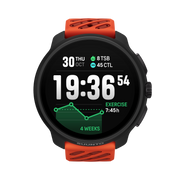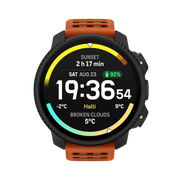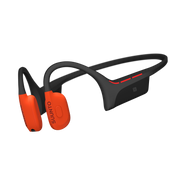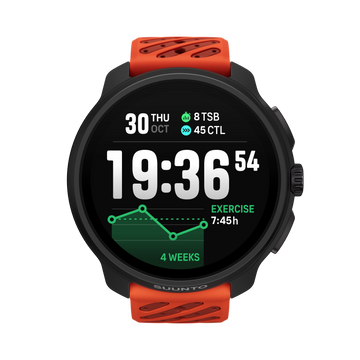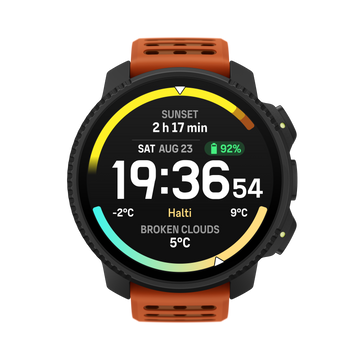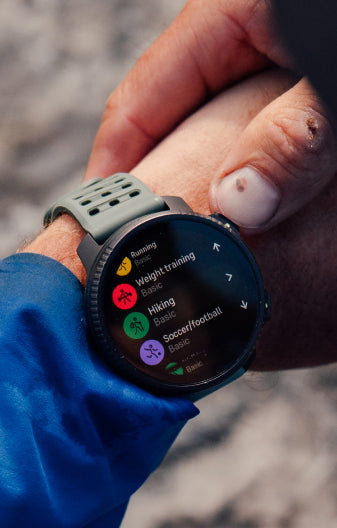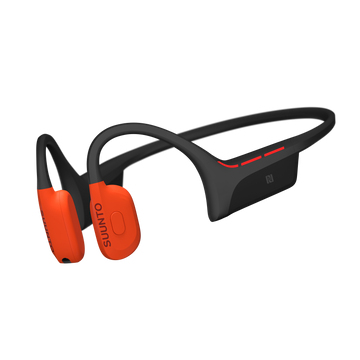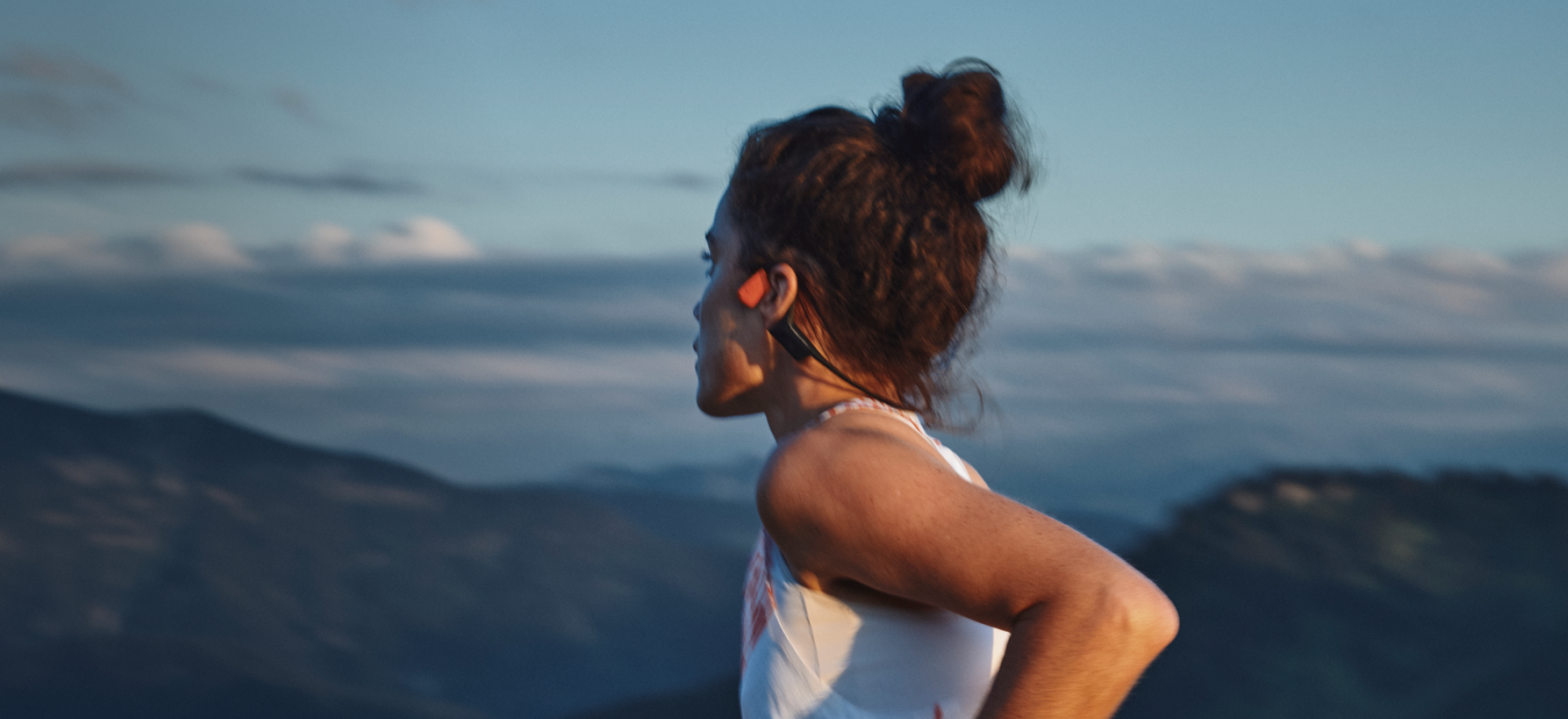

Suunto-blogg
DREAM TRAVERSE VIDEO CONTEST FINALISTS: SNOWBOARDING IN JAPAN AND TRAIL RUNNING IN ICELAND
Here are the last two candidates in the Dream Traverse Video Contest final! Vote for your favorite to make its creator's dream come true. View all six videos and choose your winner at suunto.com/traversecollection
Three Suunto Traverse outdoor watches will be raffled among all voters.
SNOWBOARDING IN JAPAN
Candidate number five is Tom Harrison from London, UK. Or actually the whole Harrison family has a dream of snowboarding in Japan.
“As a family we enjoy adventure, and I helped my sons create the film for the competition about the familie's dream trip to Japan,” Tom says.
“Whether it’s camping, climbing, hiking or skiing, we can’t get enough of new challenges. Leaving London for a new adventure, even if it’s for only a couple days, is always a thrill.”
When asked what the outdoors mean to him, Tom turned to his 15-year-old son to get an answer.
“The outdoors is something that he can’t even begin to comprehend; a place that breeds adventure. Living in the city he feels contained, boxed in, always looking out the classroom window into the unknown, and all he wants to do is explore it.”
“Outdoors give you an overwhelming sense of achievement. Getting out of London and going on an adventure is an amazing feeling, and it’s addictive. You can really find yourself when you are lost in the outdoors.”
The Harrison family’s dream is to snowboard in Niseko, Japan.
“In Niseko both amateurs and professional shred the fresh snow of the mountain,” Tom explains.
Tom would take his sons also to Tokyo and Kyoto to explore the culture and beauty of their dream destination.
“I would love to see my boys’ faces as they watch the crowds at the famous Shibuya zebra crossing in Tokyo or marvel at the beauty of the bamboo forest in Kyoto. It would be an unforgettable experience.”
TRAIL RUNNING EP.5
Finalist number six is Björn Hunger, 17, from Windischgarsten, Austria. Björn enjoys trail running, mountain biking, ski mountaineering and shooting videos.
“For me outdoors mean freedom. It's the best thing in the world to be out in the mountains with my friends and family!” Björn says.
Björn’s dream traverse destination is Iceland.
“To go to Iceland is one of my biggest dreams and it would be so cool to realize this dream!”
“I would like to go to Iceland because the whole nature and the mountains there are so awesome.“
Get to know the other candidates:
DREAM TRAVERSE VIDEO CONTEST FINALISTS: KINGDOM TRAVERSE AND PATAGONIA DREAMING
DREAM TRAVERSE VIDEO CONTEST FINALISTS: DO THINGS ALWAYS AND WINTRY CHINA DREAM
Go to suunto.com/traversecollection, watch the videos and vote for your favorite. Three Suunto Traverse outdoor watches will be raffled among all voters.
Dream Traverse Video Contest Finalists: Kingdom Traverse and Patagonia Dreaming
Get to know the first two Dream Traverse Video Contest finalists and vote for your favorite to make its creator's dream come true! View all six videos and choose your winner at traversecollection
Three Suunto Traverse outdoor watches will be raffled among all voters.
KINGDOM TRAVERSE
The first candidate, Grobler Basson, comes from Cape Town, South Africa. Grobler and some of his friends actually had their adventure dream long before the contest.
“We have been planning our adventure for the better part of this year, we even called it the Kingdom Traverse long before we knew of Suunto's plans and the launch of your new Traverse watch,” Grobler says.
“We will traverse Lesotho from one side to the other. We will do this the only way we know possible – high altitude trail running, some off-the-grid mountain biking, cold water swimming and breath-taking kayaking coupled with some off-the-chart camping spots and difficult navigation!”
The Kingdom of Lesotho is a land locked mountain kingdom located inside South Africa. It is the country with the highest lowest point on Earth of 1400 m (4600 ft).
“The Kingdom Traverse would serve two goals; firstly to stimulate and temporarily satisfy our need for adventure and exploration, secondly, we see Lesotho as an amazing jewel yet to be discovered by international adventure tourism. We believe that the Kingdom Traverse would bring some amazing exposure to what Lesotho has to offer, and possible boost their tourism!”
PATAGONIA DREAMING
Candidate number two is Kellen Witschen from northern Minnesota in the United States.
“The outdoors is a place I can go to and feel free from a schedule and from responsibilities, even if it’s only a quick bike ride at the end of the day. It is a place to test your knowledge and skills, where the consequence of failure is very real and very apparent,” Kellen says.
Kellen’s Dream Traverse is far from an evening ride: he wants to ride the Carretera Austral, a 770 mile dirt road that runs from Puerto Montt to the start of the Patagonian ice cap.
“Ever since visiting Patagonia in 2012, I have dreamed about going back. While doing research there, I only got to see a small section of the area and the group traveled exclusively by motor vehicle. I want to go back and bike the entire 770 miles of the Carretera Austral.”
“The road travels through many different types of landscape and vegetation, ranging from closely woven coastal canals and Patagonian Steppe to high mountain peaks.”
Go to traversecollection, watch the six videos and vote for your favorite. Three Suunto Traverse outdoor watches will be raffled among all voters.
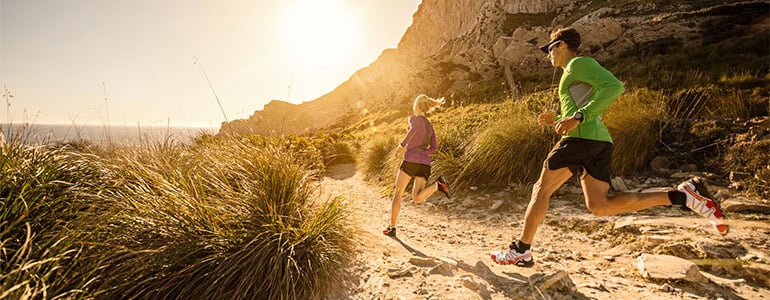
10 tips to boost your running motivation
Learning to be flexible and to change things up is the key to staying motivated.
Work on technique
“A lot of times, when you're training for a race, there isn't as much time to step back and work on technique,” says running coach Nick White, from trainright.com. “The offseason is a great time to hire a coach or sign up for a weekend clinic on how to improve your running technique to increase your efficiency. Nearly everyone has a few small changes that could be made to their form, that will net big improvements in speed.”
Join a running club
There's nothing like the power of peer pressure to keep you going through the winter months. It's more social, fun and a great way to monitor your progress and gauge how you're doing against other runners. “Joining a structured routine let's you off having to follow your own program,” says White.
Click here for 8 essential running form drills!
Do a crazy challenge
“I need to have something out there in the diary to keep me going,” says triathlon coach and ex-pro Richard Hobson. “Set up a silly challenge. Last year I did the ’30:30’. You have to run 30 minutes every day for 30 days. It’s not long but it’s amazing how you struggle when it’s dark and cold, and doing something like this gets you out the door.”
Patrick Sweeney onroute across America. © Patrick Sweeney
Don’t run to run
“Engage yourself in other activities while running,” says Patrick Sweeney, who probably knows quite a lot about motivation after recently running 5,000 km across America. “I live at the beach and I enjoy counting the different species of birds that I see, scanning the ocean for whales and dolphins and collecting discarded beach toys along the way.
Running provides so much opportunity to find the simple joys in life. Don't think of it as a run, think of it as an adventure.”
Mix it up with some cross-training
“Running is a great mode of exercise, but it's not a perfectly well-rounded exercise program in and of itself. Using your off-season to add other forms of exercise is a great way to remind your body that it can do more than just run,” says White.
He suggests taking up other ball, racket or outdoor sports like rock climbing to keep you active and fit while giving you a break from running. “Core work and weight training is a good thing to work on as well,” he adds.
Gediminas Grinius is also an advocate of night running. © Gediminus Grinius
Ask yourself this:
“Do you want to lose your fitness, which you worked on for the last six months,” Suunto ambassador Gediminas Grinius recommends asking yourself. “Do you want your neighbor to be faster? Do you want to gain weight? If you answer no, then your only option is to keep running.”
Read the 4 myths about ultra-running you need to know
Run early (if you live in the city)
“Weekend morning runs are great for aromas,” says Sweeney. “I’m vegan but I enjoy running around town taking in all the smells of bacon and eggs being cooked. Every block is full of new aromas to enjoy.” And what better way to finish your run than in a bakery?
Go trail running
“Most runners do their training on treadmills, roads, sidewalks, and bike paths,” says White. “There are many benefits to running on trails; better balance development, stability muscles get a workout that they don't get on flat pavement, there are often more hills to develop strength, softer surfaces usually that are easier on your muscles and joints. And those don't even mention the fact that trails often provide much better scenery!”
Work on a weakness
If you're a marathon runner, and spend most of your time doing longer runs at lower intensity, the off-season is a great time to work on your speed, strength, and power. “Hill repeats and track intervals can be a great way to do something different, while still improving your running,” says Trainright’s Nick White. “Or if you're a 5k runner and did a lot of speedwork but not a lot of volume, the off-season can be a good time to back off a bit and do some higher mileage to improve your aerobic base.”
Don’t think: just hit play
Don’t spend ages debating with yourself whether to go for a run or not as chances are, you’ll only talk yourself out of it. Just grab your mp3 player or phone and hit play on that motivational track that works for you. Works every time.
What are your tips running when you don’t feel like it? Let us know via our social channels with the hashtag #suuntorun
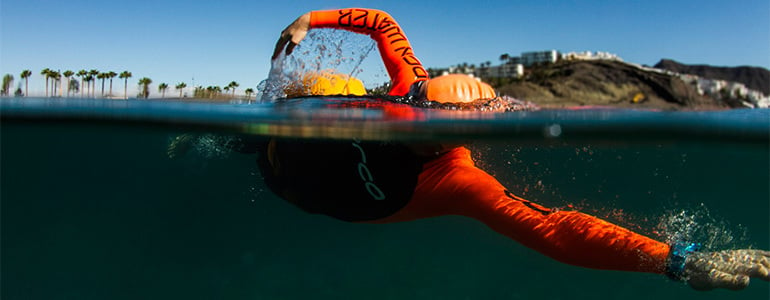
The road to Kona Ironman: Step three: Recovering for race day
The legendary Kona Ironman is just around the corner and Suunto triathlete Åsa Lundström is getting excited. We continue following her steps towards race day in our four part series. Step one was planning, step two was progress and, in this instalment, we look at her recovery or tapering time before the big day. The Kona Ironman is unforgiving. If a competitor gets to the start line not 100 per cent, the 226.27 km course can exact a heavy toll. Champion Swedish triathlete Åsa Lundström has been living in the Canary Islands for over a month, preparing for the race which will be the greatest test of her mind, body and spirit. The heat, humidity and volcanic terrain are similar to the conditions in Kona, Hawaii, making the island a better training place than her home in Scandinavia.
Click here to read about how Åsa became an elite triathlete
After an intense training cycle over the last months, for the last two of weeks Åsa has been fine-tuning her body and mind for the race. During the first week of her two week tapering period, she reduced her training volume from 35 to 20 hours. In the week immediately before the race, she cuts it from 20 to between eight and 10 hours. “This stage involves easing off the volume of training and sleeping and eating properly, and making sure to rest between the sessions to ensure quality training that feels really good,” Åsa says. “This is usually the first time when I can start sensing whether I am in good shape.” The big danger is getting to the start line over-trained. Avoiding this is crucial.
Click here to read about how to use your Ambit3's recovery features
“It’s important to pay close attention to the body’s signals,” Åsa says. “It comes down to having the experience of knowing the different signs of fatigue from hard training, and accumulated fatigue leading to overtraining. “Sleeping enough, eating enough – and frequently enough – are important for recovery.”
Åsa also writes a detailed training diary for her coach Cliff English to read for an objective perspective. Cliff looks out for negative signs and patterns that can sometimes be difficult for her to see herself. “Three weeks of hard work, good fun and nice company in this lovely place has come to an end,” Åsa says. “The journey continues and the countdown has begun! Bring it!”
Tune in next week for the final instalment of four part series about Åsa – her ideal race day in the Ironman World Championship in Kona.

6 amazing training routes from Ryan Sandes
Ultra runner Ryan Sandes has traveled the world to run some of its sweetest single trail. Consider him, then, your go-to trail aficionado! Check out below the six trail running routes he picks as the cream of the crop! Coming from Cape Town, South Africa, ultra runner and Suunto ambassador Ryan Sandes is at home running on coastal trails by the ocean. But while his roots are in Cape Town's surf beaches and the trails above in its mountains, over time he has found more and more inspiration in alpine environments. This year, for example, he's been training in mountains in Californina and the French Alps.
Below, he shares his six favorite running routes from South Africa and the United States.
Read Ryan's tips about how to go the (ultra) distance!
San Fran 50 miler, San Francisco, USA
Distance: 78.78 km Time: 06h45m Ascent: 3125 m Decent: 3137 m Highest point: 554 m Why: The Marin Headland is really spectacular and the coastal running makes me feel like I am back at home in South Africa. The trails are really fast and runnable. The Headlands are always abuzz with runners, mountain bikers and dog walkers making for a great friendly atmosphere. There are some great coffee shops right next to the trail which is an added bonus.
Big Bear Mountain, California, USA
Distance: 52.14 km Time: 04h35m Ascent: 1104 m Decent: 1091 m Highest point: 2394 m Why: I spent six weeks in Big Bear earlier this year training for the Western States 100 miler. I really enjoyed my time there and developed a special bond with the mountains. The scenery is epic and there is a great variation of trails from open fire roads to really technical single track. This was one of my final long runs I did in preparation for the Western States.
Click here for Ryan's tips on how to recover like a pro!
Glacier Point, Yosemite National Park, USA
Distance: 17.76 kmTime: 02h09m Ascent: 1008 m Decent: 1031 m Highest point: 2195 m Why: The Yosemite National Park is one of the most beautiful places I have been to. Ha! I get itchy feet everytime I get to the National Park and just can't stop running. The run up to Glacier Point is a nice gradual climb and the views from the top are absolutely breath taking. This is the perfect recovery run to take it easy and enjoy the scenery.
Skyrun Route, Drakensberg, South Africa
Distance: 96.05 km Time: 12h36m Ascent: 4760 m Decent: 4579 m Highest point: 2674 m Why: The Skyrun is a 100 km self-navigational run across the Drakensberg Mountains. There are no proper trails to follow and you basically aim for the peaks and ridgelines ahead of you. It is a really remote area, at altitude and is the perfect place for me to train for big mountain races. Running in the Drakensberg Mountains makes me feel really small and it can be super humbling. © Kolesky/ Nikon/ Red Bull Content Pool
Lion's Head, Table Mountain, South Africa
Distance: 04.05 km Time: 0h29m Ascent: 370 m Decent: 372 m Highest point: 654 m Why: Lion's Head is an iconic mountain right next to Cape Town's city centre, with panoramic views of Cape Town and Table Mountain from the top. The trail starts off on an open fire road but as you climb up the mountain the trail gets more technical with ladders and chains towards the top. This is one of my shortest training sessions but I enjoy pushing myself on this run. It’s a real lung buster!© Nick Muzik/Red Bull Content Pool
Table Mountain Crossing, South Africa
Distance: 15.08 km Time: 02h02m Ascent: 1070 m Decent: 949 m Highest point: 1045 m Why: Table Mountain is an extension of my back garden and my favorite mountain to train on. I love being able to see the ocean from the summit and I feel really at home on this mountain. The Table Mountain Crossing trail is very technical with lots of scrambling and you have to keep an eye out for giant snakes in summer. The mountains inspire me to dream but the ocean is were my roots are. © Craig Kolesky/ Red Bull Content Pool

7 reasons to love running at night
True, you may not get to enjoy the same distant views, but there are good reasons to love running at night, says elite trail runner Gediminas Grinius – who trains on top of his full time job. Here are his top 7 reasons to put on your headtorch and high visibility jacket and get out the door for a night run!
Aside from working full time, Gediminas is also a father of two. © Gediminas Grinius
Explore your wild side
At night your senses are more attuned says Gediminas. “With less of an emphsis on vision, you become more alert to your surroundings and that brings out your wild side, especially when alone. And that’s the best remedy after a long day in the office.”
Escape the heat
Running in warm temperatures isn’t all great, says this year’s Transgrancanaria winner. “Running at night lets you avoid the day’s heat,” he says, “which is better for training”.
Find new beauty
“Running at night breaks up the routine and you can find new beauty in the same trails – especially for those like me who don’t have a lot of hills to train on.”
Avoid the traffic
Turn your commute into training, says Gediminas. “That way you avoid the traffic and you beat the ‘no time for sport’ excuse. Commuting to the office in the winter months means running in the dark is unavoidable,” he adds.
Prepare for ultras
Use night running to prepare for an ultra. “Almost all 100 mile races have a night element in it,” he says. And for regular trail runners, most 100 km races have a night element as well!”
Improve your technical downhills
“While running at night you must trust your sixth sense more often,” says Gediminas. “Sometimes your feet are your only sensors on the ground and you have to turn your brain off and trust your feet to know where to step. This is exactly the same as when you have to run on technical terrain so running at night is a good way to make you better on super technical downhills.”
Unleash the dog!
“Zoro is my best running partner and the enjoys freedom as much as I do, but because of a lot of distractions during the day (people, other dogs) it's the best time to set him free at night.”
